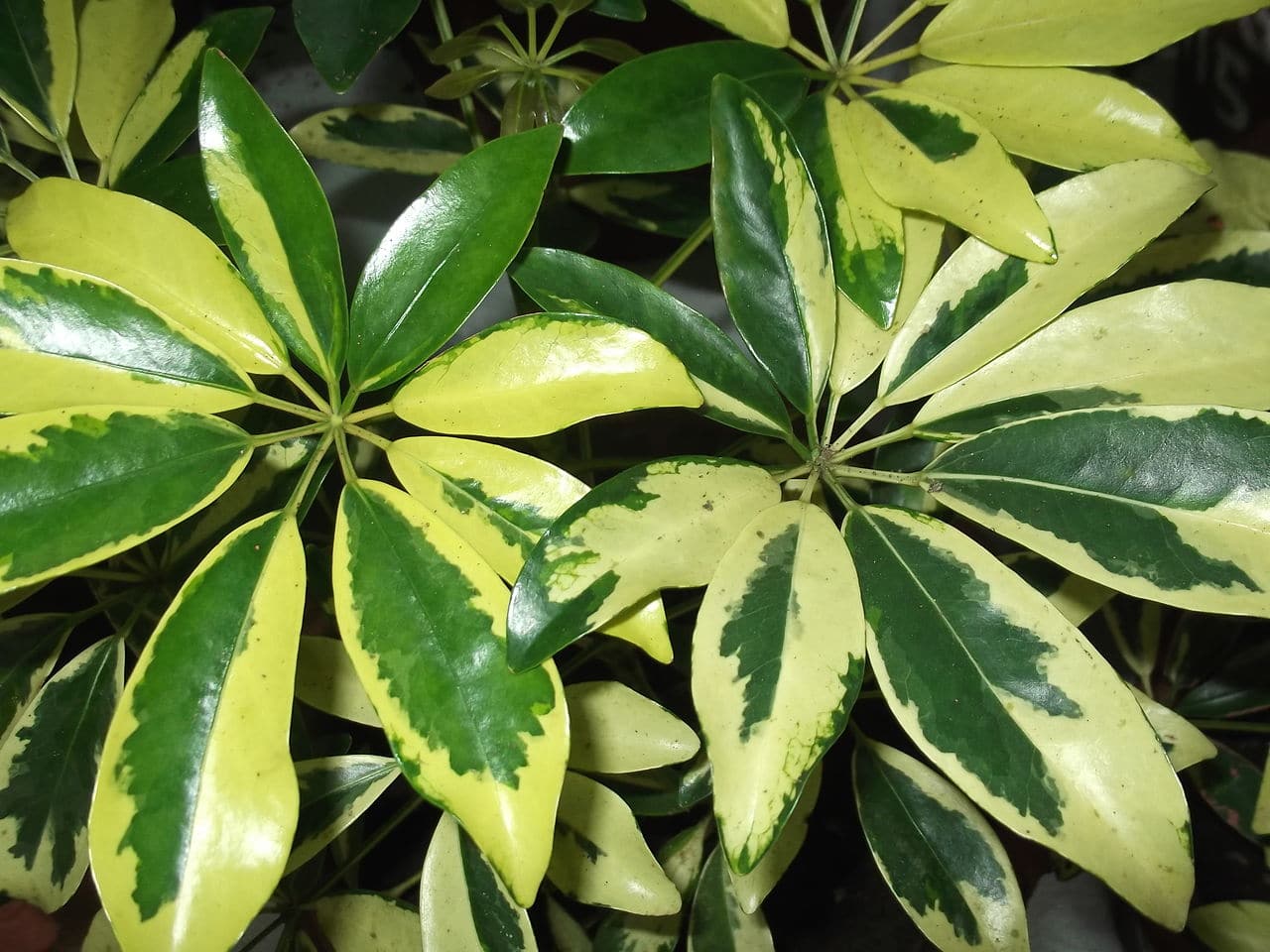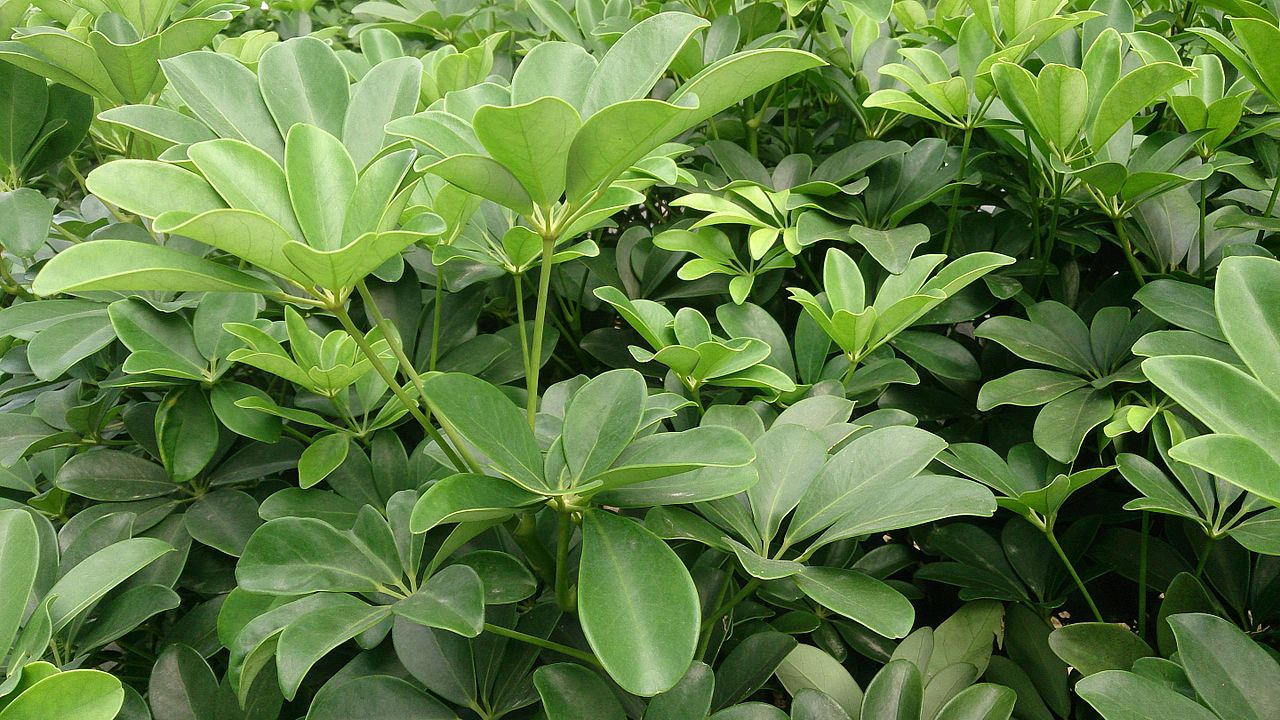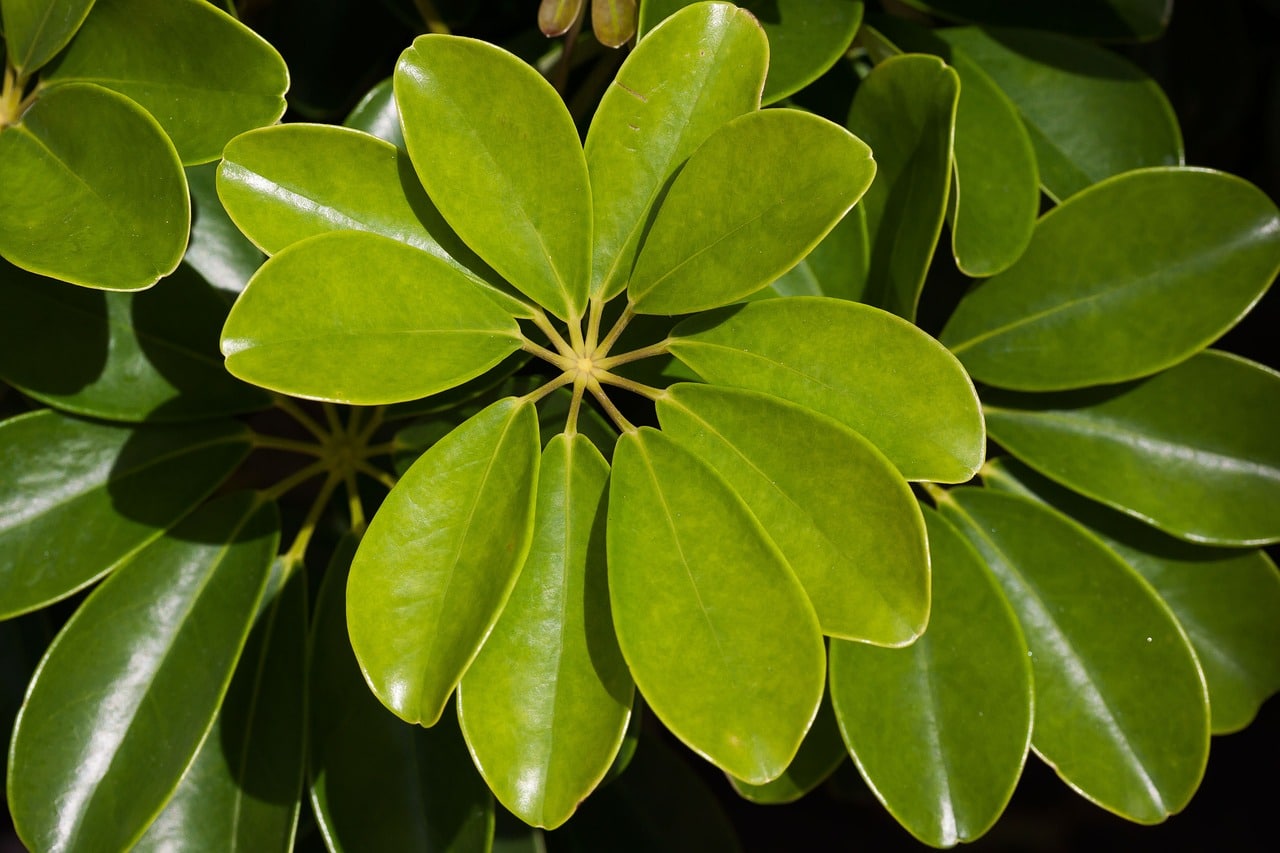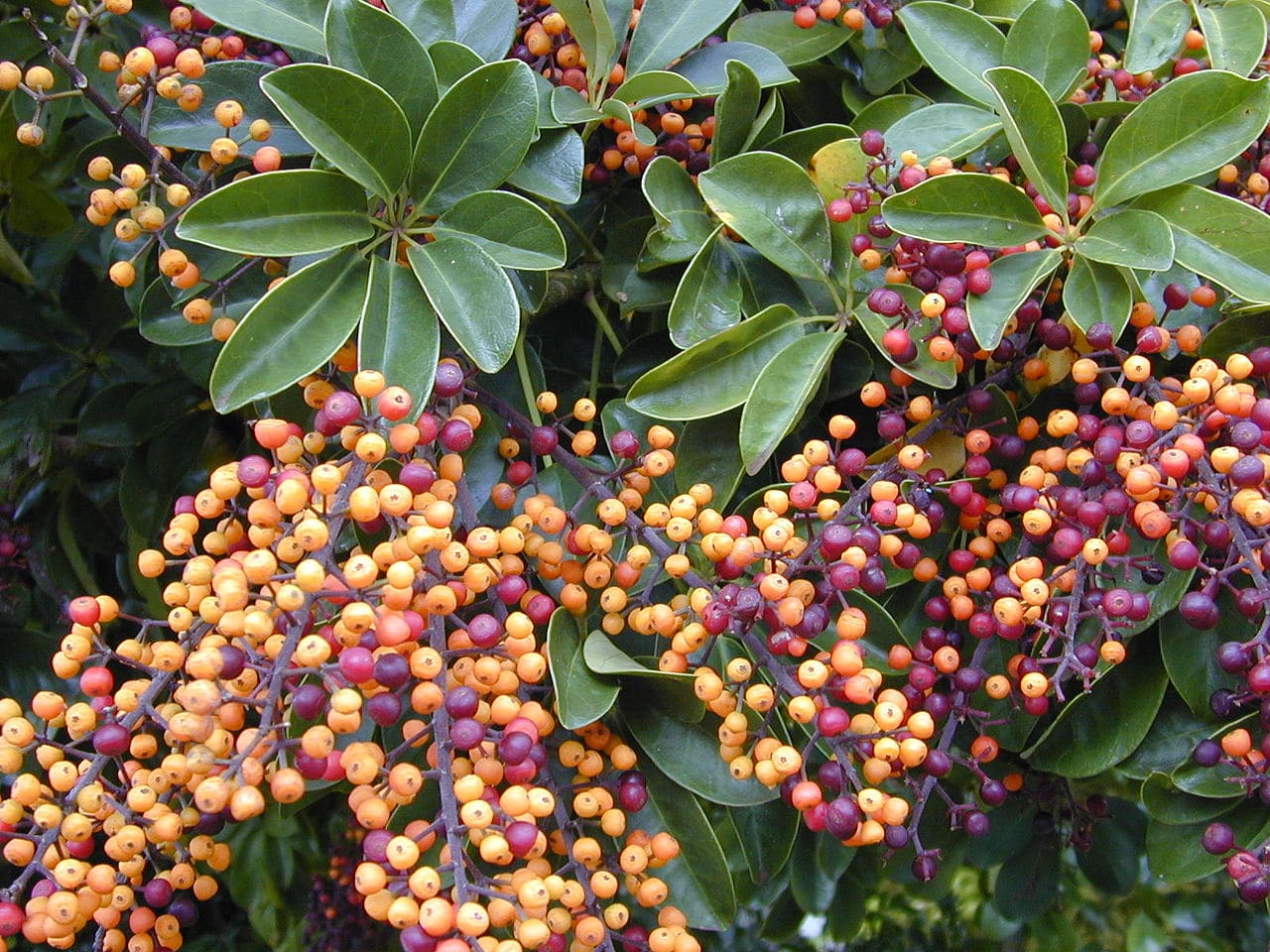
Image - Wikimedia / Yercaud-elango
La chef It is one of the typical plants that we can find in nurseries, and especially in greenhouses. It is usually labeled as a houseplant, so there are many of us who take it home to decorate the living room or bedroom.
However, To what extent is it true that you have to protect yourself inside the home? Can it be out? If you have doubts about where to place your plant, do not stop reading.
Indoor plants are those that, due to their tropical origin, need protection against the cold and especially against frost. But, really, all plant beings are from outside. Even so, sometimes in the nurseries you can find some that are labeled as "indoor" and, therefore, that are considered very delicate that in reality they are not so much, like the chef.
Origin and characteristics of the chef
Our protagonist It is a shrub or evergreen tree depending on the species that reaches a maximum height of 30 meters native to Asia. It belongs to the genus Schefflera, which is made up of a dozen species, the best known being the S. arboricola and S. actinophylla.
They develop palmate or finger-shaped leaves, rarely simple, dark green or variegated. The flowers have no ornamental value, they are tiny and are grouped in clusters, and being greenish in color they usually go unnoticed. The fruit is a small drupe with a diameter of less than 1 centimeter that turns blackish when ripe.
Schefflera actinophylla

Image - Flickr / guzhengman
It is a tree native to the rainforests of Australia, and is known as the umbrella tree or octopus tree. It can reach a height of 15 meters, and its leaves are compound, green. It is generally kept as a tree, but in its habitat it tends to develop as a climber, growing leaning on other tall plants.
Its flowers are grouped in clusters of up to 2 meters, as they are inflorescences that contain up to 1000 small flowers.
Schefflera arboricola

Image - Wikimedia / Mokkie
It is an evergreen shrub or tree that reaches a height of 3 to 6 meters, native to Taiwan and Hainan Island in China. In habitat it can grow as a climber if it has trees nearby, but in cultivation it is kept as an isolated specimen, or it is planted in rows to make beautiful hedges.
Its leaves are palmate compound, formed by 7 to 9 green or variegated leaflets. And its flowers are grouped in clusters of about 20 centimeters.
What care do you need?
If you dare to have a copy, we recommend you take care of it as follows:
Location
- Body exterior:: it must be in full sun.
- Interior: it must be put in a bright room, since its light needs are very high; it is also necessary that there are no drafts, to prevent its leaves from burning.
Irrigation
They are plants that want water, but not in excess. If they are grown in pots, they must be watered 2-3 times a week in summer, and every 10-15 days the rest of the year; instead if they are kept in the garden, it is advisable to water them about 2 times a week in summer, less in winter.
When in doubt, it is always better not to water, as overwatering can rot its roots and, consequently, we could lose them. In fact, for this same reason they should not be planted in pots without holes or in poorly drained land.
Subscriber
From the beginning of spring to the end of summer it is interesting to pay them, for example, with guano (for sale here) or with a universal fertilizer for plants following the indications specified on the package.
Pruning

They don't really need it, but can be pruned in late winter to give them a more arboreal or bushy shape. For this, the dry, diseased branches and those that are weak are removed, and all the necessary ones are cut to give it the desired shape.
Do not be afraid to over-prune: of course you should always try to avoid drastic pruning, but schefflera are very resistant, and they recover well when they are pruned too much. But yes, disinfect the tools before and after use, because you know what they say: prevention is better than cure 😉.
Planting or transplanting time
En spring, when the risk of frost has passed.
If it is potted, transplant it to a larger one every 2-3 years.
Multiplication
The chefflera multiply by seeds and cuttings in spring-summer and even in autumn if the weather is mild:
Seeds
The seeds will be sown in seedbeds with drainage holes, with specific soil (for sale here) or universal substrate, and ensuring that they are as far apart as possible. Then, they will be watered and placed near a heat source, or outside in the sun if it is summer.
If all goes well, they will germinate in about 15 days.
Cuttings
To multiply it by cuttings you have to cut a branch of about 30 centimeters, impregnate the base with homemade rooting agents and finally plant it in a pot with vermiculite that we will have previously watered. Then, it is placed outside, in semi-shade, and the substrate will be kept moist.
In about 1 month it will root.
Plagues and diseases

Image - Wikimedia / Forest & Kim Starr
The chefs are very resistant in general, but during the summer they can be affected especially by cottony mealybugs that are fought with a specific insecticide for sale here.
In the event of overwatering, the mushrooms they could damage them. To avoid this, it is necessary to control the waterings and, in the event that white or brown spots appear, or that the trunk begins to soften, it is necessary to treat with fungicide.
Rusticity
They resist weak frosts without problems, up to -2ºC, perhaps -3ºC if it is for a short time and is somewhat sheltered.
Is the chef's kitchen indoor or outdoor?
Normally, it is kept as a houseplant, but the truth is that whenever possible it is better that we place it outside, either in a pot or directly in the garden. The cheflera is a very beautiful plant, which looks great in any corner, as long as it receives a lot of sunlight. It does not do well in semi-shade, although it can tolerate it if it is in direct sunlight for a minimum of five hours a day.
It is much more resistant to cold than is believed. It can withstand up to -2ºC without being damaged, so it's worth giving it a try.
Where to buy a chef's plant?
You can get it from here:

Hi Monica, I live in Aruba and I have a beautiful Cheflera with very yellow leaves, which I bought a month and a half ago, I left it outside, in the sun, since that is how it was in the place where I acquired it. But in the last month it has rained a lot here on the Island, so much so that she formed a pool in the upper part of her pot, so I took it to the shade and did not put more water on it for a week, when the sun came up I would return it to put there to dry, but it remained very wet, and a few days ago it began to wither and fill with ants ... what can I do, how do I get it back? Thank you.
Hi Karem.
To dry the earth what you can do is use a hair dryer. It will hardly hurt him 🙂
In addition, I recommend treating it with a fungicide to prevent the appearance of fungi that you will find for sale in any nursery or garden store.
A greeting.